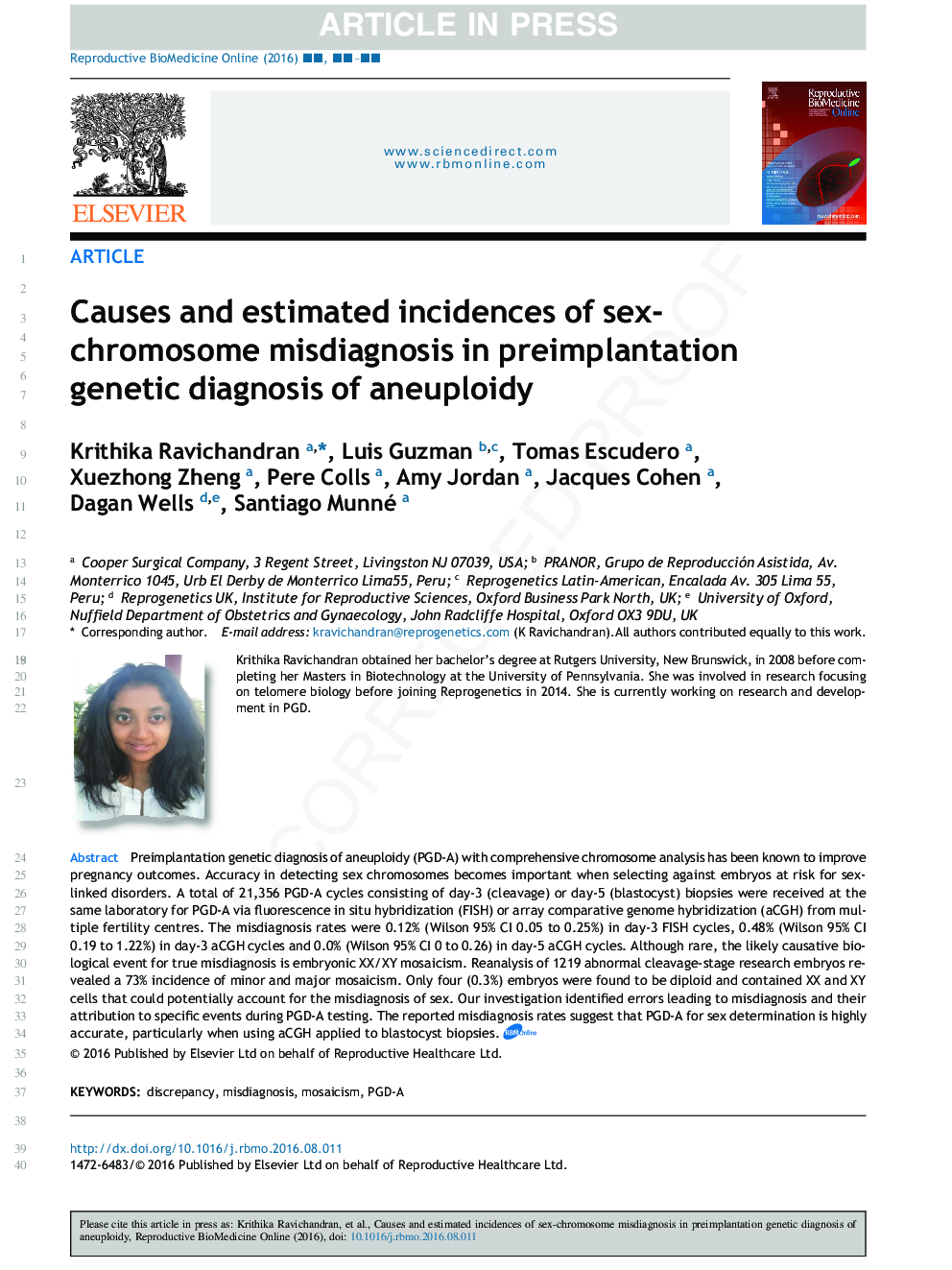| کد مقاله | کد نشریه | سال انتشار | مقاله انگلیسی | نسخه تمام متن |
|---|---|---|---|---|
| 5696638 | 1410269 | 2016 | 10 صفحه PDF | دانلود رایگان |
عنوان انگلیسی مقاله ISI
Causes and estimated incidences of sex-chromosome misdiagnosis in preimplantation genetic diagnosis of aneuploidy
ترجمه فارسی عنوان
علل و برآورد شیوع تشخیص نادرست کروموزوم جنسی در تشخیص ژنتیک قبل از انزال آئروپلوئیدی
دانلود مقاله + سفارش ترجمه
دانلود مقاله ISI انگلیسی
رایگان برای ایرانیان
موضوعات مرتبط
علوم پزشکی و سلامت
پزشکی و دندانپزشکی
زنان، زایمان و بهداشت زنان
چکیده انگلیسی
Preimplantation genetic diagnosis of aneuploidy (PGD-A) with comprehensive chromosome analysis has been known to improve pregnancy outcomes. Accuracy in detecting sex chromosomes becomes important when selecting against embryos at risk for sex-linked disorders. A total of 21,356 PGD-A cycles consisting of day-3 (cleavage) or day-5 (blastocyst) biopsies were received at the same laboratory for PGD-A via fluorescence in situ hybridization (FISH) or array comparative genome hybridization (aCGH) from multiple fertility centres. The misdiagnosis rates were 0.12% (Wilson 95% CI 0.05 to 0.25%) in day-3 FISH cycles, 0.48% (Wilson 95% CI 0.19 to 1.22%) in day-3 aCGH cycles and 0.0% (Wilson 95% CI 0 to 0.26) in day-5 aCGH cycles. Although rare, the likely causative biological event for true misdiagnosis is embryonic XX/XY mosaicism. Reanalysis of 1219 abnormal cleavage-stage research embryos revealed a 73% incidence of minor and major mosaicism. Only four (0.3%) embryos were found to be diploid and contained XX and XY cells that could potentially account for the misdiagnosis of sex. Our investigation identified errors leading to misdiagnosis and their attribution to specific events during PGD-A testing. The reported misdiagnosis rates suggest that PGD-A for sex determination is highly accurate, particularly when using aCGH applied to blastocyst biopsies.
ناشر
Database: Elsevier - ScienceDirect (ساینس دایرکت)
Journal: Reproductive BioMedicine Online - Volume 33, Issue 5, November 2016, Pages 550-559
Journal: Reproductive BioMedicine Online - Volume 33, Issue 5, November 2016, Pages 550-559
نویسندگان
Krithika Ravichandran, Luis Guzman, Tomas Escudero, Xuezhong Zheng, Pere Colls, Amy Jordan, Jacques Cohen, Dagan Wells, Santiago Munné,
